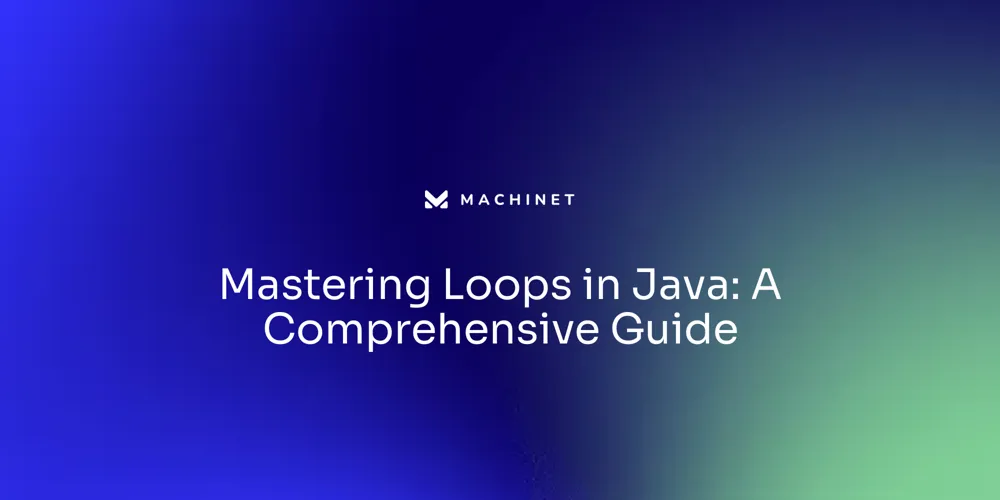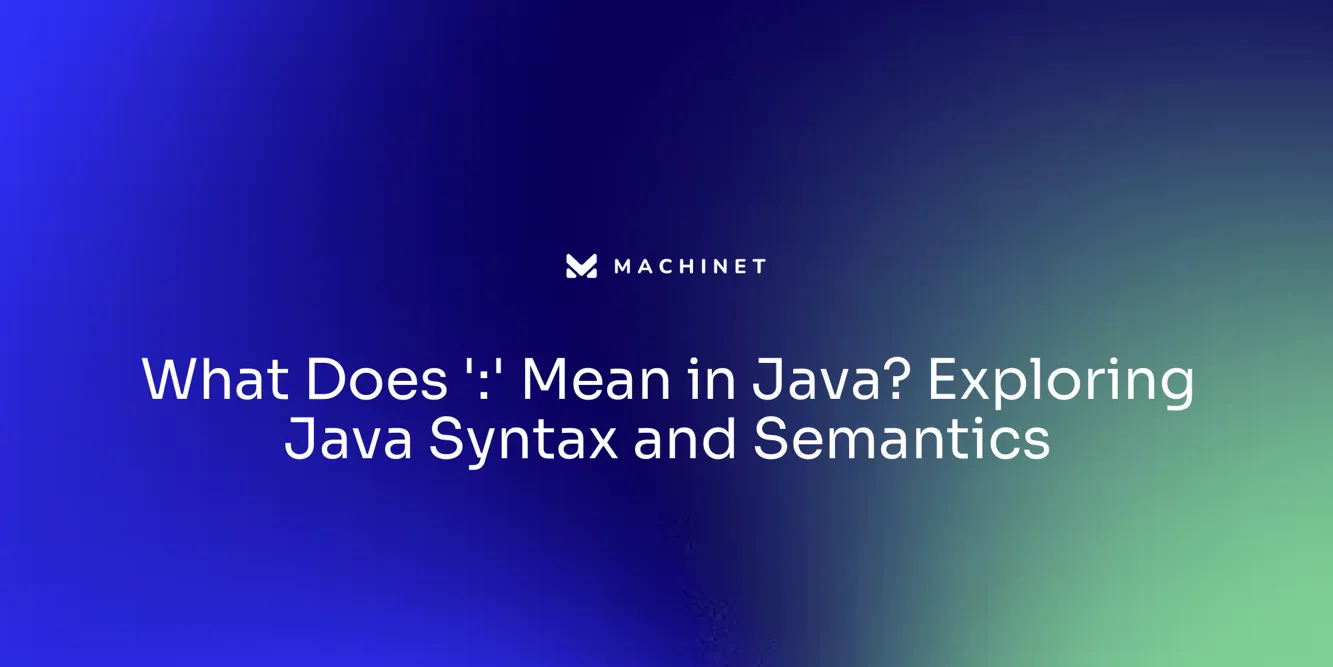
Table of Contents
- Understanding Loops in Java
- For Loops
- While Loops
- Do-While Loops
Introduction
The article "Understanding Loops in Java" provides a comprehensive overview of the different types of loops in Java and their applications. It explores how loops are a fundamental control structure in Java, allowing for the repeated execution of code. The article delves into the features and functionalities of for loops, while loops, and do-while loops, highlighting their advantages and use cases.
Additionally, it discusses the performance implications of nested loops and the importance of thoughtful implementation to maintain code efficiency. The article also touches upon the advancements in Java Development Kit 23 (JDK) and how they enhance Java's capabilities in handling complex data operations and parallel processing. Throughout the article, readers will gain a deeper understanding of the role loops play in simplifying tasks, improving code performance, and creating robust applications in Java.
Understanding Loops in Java
Java's for loop is a fundamental control structure that allows repeated execution of a block of code. It's a structured and powerful tool that can be used for a range of iterative tasks.
For instance, consider the 'Happy Number' problem, a classic example of how loops can be applied to solve complex problems in computer science and Java programming. A happy number is one that eventually reaches 1 when replaced by the sum of the square of each digit, and Java's for loop is an ideal candidate for implementing the algorithm to check for such numbers.
Loops are also crucial in handling Java's non-primitive data types, which are the backbone of object-oriented programming. With the advent of Java Development Kit 23 (JDK), we see enhancements like the Vector API and Stream API, which demonstrate Java's evolving capabilities in handling complex data operations and parallel processing.
For loops, alongside these APIs, contribute to Java's ability to efficiently process sequences of values, whether sequentially or in parallel. Moreover, the introduction of IntStream and LongStream presents lazy alternatives to the traditional for loop, providing Java developers with more tools to write performant code. However, it's important to be aware of the performance implications of nested loops, which can exponentially increase the time complexity of your code. This highlights the need for thoughtful implementation of loops to maintain code efficiency and modularity. As we delve into the intricacies of Java's for loop, we can appreciate its role in simplifying complex tasks, enhancing code performance, and facilitating the creation of robust applications.

For Loops
The for loop in Java is an essential construct for control flow, enabling the execution of a block of code multiple times. It's particularly well-structured, making it a versatile tool in a developer's arsenal.
The loop is composed of three critical parts: initialization, where variables are set up; the condition, which is checked before each iteration and determines if the loop should continue; and the increment, which updates the loop variable after each cycle. This structure not only facilitates tasks like summing numbers and iterating over arrays or collections but also supports more complex operations.
For example, solving the Happy Number problem or implementing a lazy version of numeric range-based loops with IntStream and LongStream. Moreover, the recent advancements with Java Development Kit 23 (JDK) introduce features such as the Vector API, enhancing the performance of vector computations, which can be beneficial in optimizing loops. When coding for loops, it's crucial to handle exceptions, such as when insufficient arguments are passed, to maintain robustness. Additionally, adhering to best practices in code formatting, like effective use of whitespace, contributes to the maintainability and readability of loop implementations, ensuring that the code remains clear and comprehensible over time.

While Loops
The while loop in Java serves as a versatile tool for developers, particularly when the number of iterations is not predetermined. It operates on a single boolean condition and repeats the enclosed block of code for as long as the condition holds true.
This construct is particularly handy for scenarios such as validating user input or maintaining the cycle of a game until a specific event occurs. For instance, consider the 'Happy Number' problem, a fascinating challenge that underscores the importance of iterative processes in algorithm design.
In Java, determining whether a number is 'happy' involves a loop that executes until a certain condition—reaching the number 1—is fulfilled. The concept of a 'Happy Number' is not just a mathematical novelty; it has tangible applications in computational tasks and can be an engaging way to grasp the practical use of while loops. Furthermore, with the advent of Java Development Kit 23 (JDK), features like the Vector API are set to optimize vector computations that compile at runtime, potentially enhancing the performance of loops that involve complex calculations. As we embrace the capabilities of JDK 20, which introduces virtual threads and structured concurrency, developers are poised to write more efficient and responsive Java applications, where loops like while can be managed across multiple threads for high-throughput demands.

Do-While Loops
The do-while loop in Java serves a unique purpose in the realm of control flow constructs. It is particularly advantageous for scenarios where an action must be executed prior to the evaluation of a condition.
Unlike the while loop, which may bypass the block of code entirely if the condition is false from the onset, the do-while loop ensures that the code will run at least once. This attribute is vital when the initial condition is less crucial than the action itself, such as in the initial collection of user input or the presentation of a menu before any user interaction.
In these cases, the loop facilitates a more intuitive user experience by allowing at least one iteration to occur, subsequently performing the condition check to determine the continuity of the loop. Java's control structures are designed to cater to various use cases, with each loop serving a distinct purpose.
The for loop, for example, is well-structured for situations where the number of iterations is known or can be determined by a condition. It is a staple in Java programming, as seen in applications ranging from simple repetition of a string to complex algorithmic challenges like the "Happy Number" problem. This problem, while seemingly abstract, has implications in algorithm design and is a testament to the importance of understanding Java's loop mechanics. As Java continues to evolve with the release of Java Development Kit 23 (JDK), developers are presented with new features like the Vector API and changes to virtual threads that facilitate more efficient computations and concurrent programming. Staying abreast of these updates is crucial for developers, especially when considering the implications on control flow and the overall performance of Java applications.

Conclusion
In conclusion, loops are a fundamental control structure in Java that allow for the repeated execution of code. The article explored the features and functionalities of for loops, while loops, and do-while loops, highlighting their advantages and use cases.
It emphasized the importance of thoughtful implementation to maintain code efficiency and modularity, especially when dealing with nested loops. Furthermore, the article touched upon the advancements in Java Development Kit 23 (JDK) and how they enhance Java's capabilities in handling complex data operations and parallel processing.
The introduction of features like the Vector API and changes to virtual threads provide developers with more tools to write performant code and create efficient and responsive Java applications. Overall, understanding loops in Java is crucial for simplifying tasks, improving code performance, and creating robust applications. By harnessing the power of different types of loops and staying updated with the latest advancements in Java, developers can optimize their code and meet the demands of modern software development.
AI agent for developers
Boost your productivity with Mate. Easily connect your project, generate code, and debug smarter - all powered by AI.
Do you want to solve problems like this faster? Download Mate for free now.




